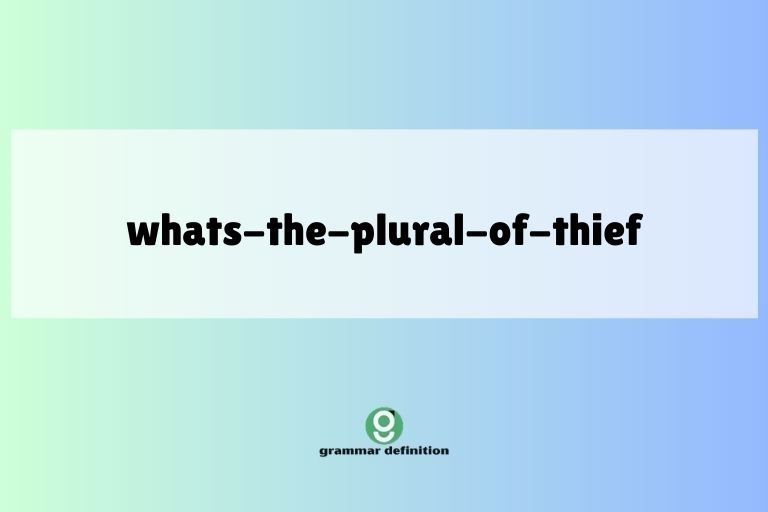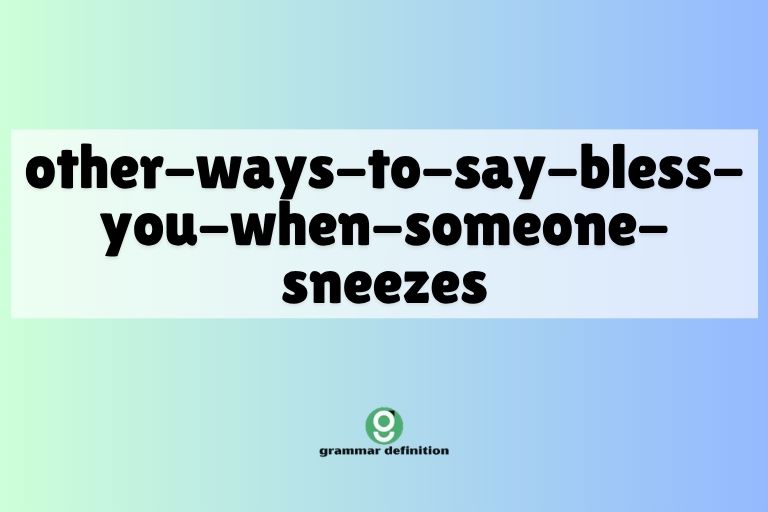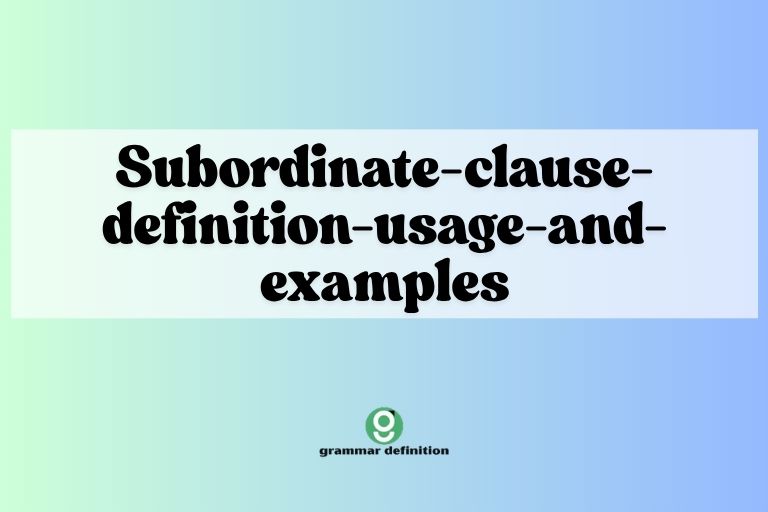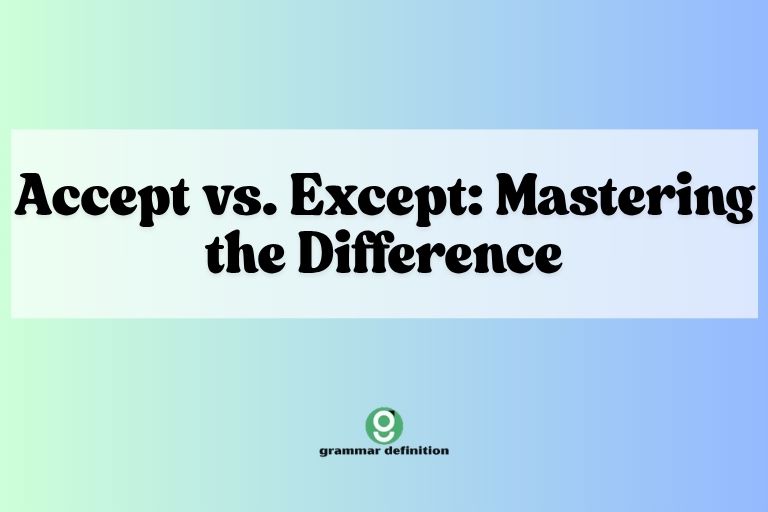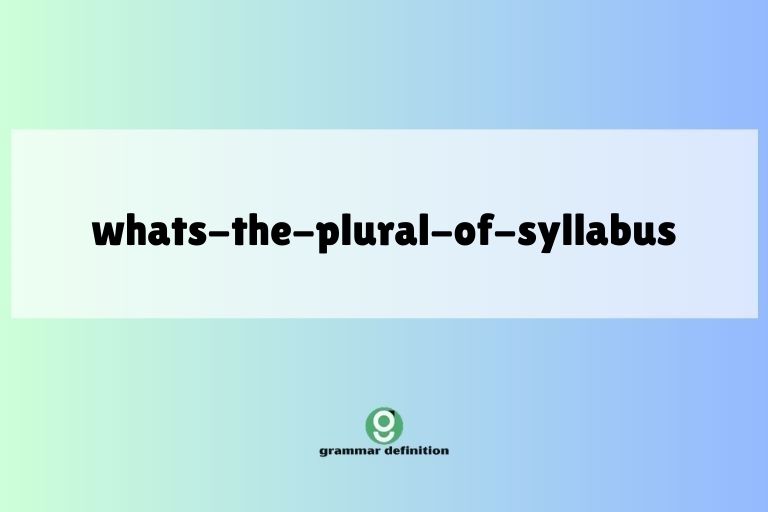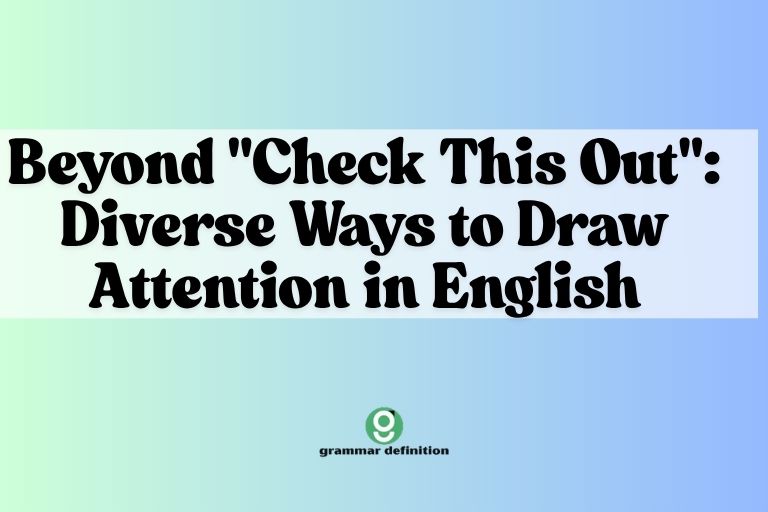Weep, Wept, or Weeped: Mastering the Past Tense of Weep
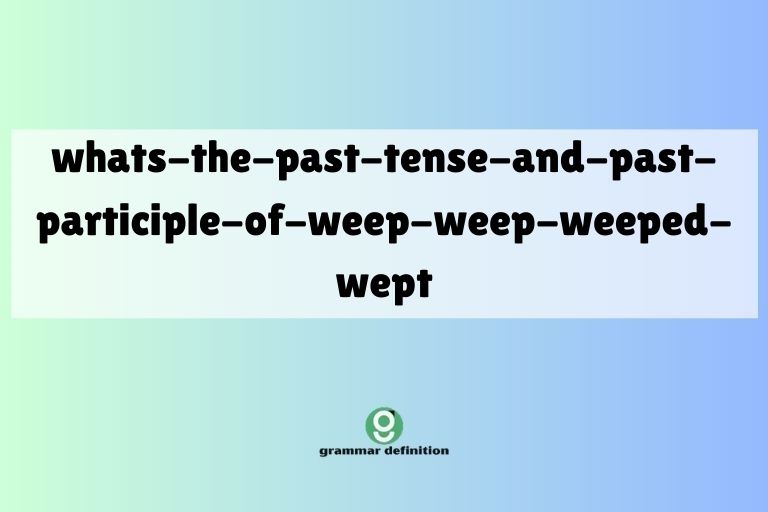
Navigating the intricacies of English verb conjugations can be challenging, especially when dealing with irregular verbs. The verb “weep,” meaning to shed tears, is one such verb that often causes confusion.
Understanding its past tense and past participle forms—whether it’s “wept,” “weeped,” or even “weep weep weeped”—is crucial for accurate and effective communication. This article will delve into the correct forms of “weep,” explore its usage, and provide practical exercises to help you master this essential aspect of English grammar.
Whether you are an English language learner, a student preparing for exams, or simply someone who wants to refine their grammar skills, this guide will equip you with the knowledge and confidence to use “weep” correctly in various contexts. We will cover definitions, structural breakdowns, examples, common mistakes, and advanced topics to ensure a comprehensive understanding.
Table of Contents
- Introduction
- Definition of Weep
- Structural Breakdown
- Types or Categories
- Examples of Weep in Different Tenses
- Usage Rules
- Common Mistakes
- Practice Exercises
- Advanced Topics
- FAQ
- Conclusion
Definition of Weep
The verb “weep” primarily means to shed tears, typically as an expression of sorrow, pain, or distress. It can also be used to describe the process of exuding liquid, though this usage is less common.
Understanding the various nuances of “weep” is essential for using it correctly in different contexts. It’s often associated with deep emotion and vulnerability.
Classification and Function
“Weep” is classified as an intransitive verb, meaning it does not require a direct object to complete its meaning. However, it can be followed by adverbs or prepositional phrases to provide additional context. Functionally, it serves to express emotional or physical states. The verb “weep” can also be used in a transitive sense in some rare and poetic contexts, but this is uncommon. Its primary function is to describe the action of shedding tears.
Contexts of Use
The verb “weep” is commonly used in literature, poetry, and everyday conversation to convey strong emotions. It appears in various contexts, such as:
- Expressing Sadness: She began to weep uncontrollably after hearing the news.
- Describing Grief: The mourners wept openly during the funeral.
- Indicating Relief: He wept with relief when he realized his family was safe.
- In Figurative Language: The sky wept tears of rain.
Structural Breakdown
The principal parts of the verb “weep” are as follows:
- Base Form: weep
- Past Simple: wept
- Past Participle: wept
- Present Participle: weeping
Notice that the past simple and past participle forms are the same: “wept.” This is a characteristic of many irregular verbs in English. The structural simplicity, however, belies the common confusion surrounding its correct usage.
The present participle, “weeping,” is formed by adding “-ing” to the base form, which is a regular pattern for English verbs. It is used in continuous tenses (e.g., “She is weeping”) and as a gerund (e.g., “Weeping can be therapeutic”).
Types or Categories
While “weep” itself doesn’t have different types or categories in terms of its core meaning, its usage can vary based on the tense and context. Here’s a breakdown:
Simple Present
Used to describe habitual actions or general truths.
Example: I weep whenever I watch that movie.
Present Continuous
Used to describe actions happening now.
Example: She is weeping because she lost her favorite toy.
Simple Past
Used to describe actions that happened in the past.
Example: He wept when he heard the sad news.
Past Continuous
Used to describe actions that were in progress in the past.
Example: They were weeping as they watched the old house burn down.
Present Perfect
Used to describe actions that started in the past and continue to the present or have a result in the present.
Example: She has wept for days since her cat died.
Past Perfect
Used to describe actions that were completed before another action in the past.
Example: He had wept before she arrived, so his eyes were red.
Future Tense
Using “weep” in the future tense usually requires a helping verb like “will” or “be going to.”
Example: She will weep if she doesn’t pass the exam.
Examples of Weep in Different Tenses
Understanding how to use “weep” in various tenses is crucial for effective communication. The following tables provide extensive examples to illustrate its usage.
Simple Present Tense Examples
The simple present tense is used to describe habitual actions or general truths. It’s less common to use “weep” in the simple present, but it can be used to describe a tendency or habit.
Here are some examples of the verb “weep” in the simple present tense:
| Sentence | Explanation |
|---|---|
| I weep at sad movies. | Describes a habitual action. |
| She weeps easily when she’s tired. | Describes a tendency. |
| He weeps during emotional scenes in plays. | Describes a habitual action. |
| The willow tree weeps in the wind. | Figurative use; describes the tree’s appearance. |
| Sometimes, she weeps for no apparent reason. | Describes an occasional action. |
| He always weeps when he chops onions. | Describes a habitual action. |
| She weeps at the memory of her childhood. | Describes a habitual action. |
| The old woman weeps for her lost youth. | Describes a habitual action. |
| He weeps when he sees injustice in the world. | Describes a habitual reaction. |
| She weeps at weddings, even if she doesn’t know the couple. | Describes a habitual reaction. |
| I weep when I think about the state of the world. | Expresses a feeling or reaction. |
| She weeps at the sound of that particular song. | Describes a specific trigger. |
| He weeps when he reads poetry. | Describes a habitual action. |
| She weeps when she feels overwhelmed. | Describes a typical reaction. |
| He weeps when he watches old home movies. | Describes a habitual action. |
| She weeps at the thought of leaving her friends. | Describes a habitual action. |
| He weeps during the national anthem. | Describes a habitual action. |
| She weeps at the sight of suffering. | Describes a habitual reaction. |
| He weeps whenever he reflects on his past mistakes. | Describes a habitual action. |
| She weeps every time she visits her grandmother’s grave. | Describes a habitual action. |
| He weeps when he remembers his childhood dog. | Describes a habitual action. |
| She weeps at the beauty of nature. | Describes a habitual action. |
| He weeps when he thinks about the future. | Describes a habitual action. |
Past Simple Tense Examples (“Wept”)
The past simple tense is used to describe actions that were completed in the past. This is the most common way to use “weep” in the past.
Here are some examples of the verb “weep” in the past simple tense:
| Sentence | Explanation |
|---|---|
| She wept when she heard the news. | Describes a completed action in the past. |
| He wept openly at the funeral. | Describes an action done in the past. |
| I wept because I was so happy. | Describes a past emotion. |
| They wept together, holding each other close. | Describes a shared past experience. |
| The child wept after falling and scraping his knee. | Describes an immediate reaction to a past event. |
| She wept tears of joy at the wedding. | Describes a past emotion. |
| He wept silently in the corner, unnoticed by others. | Describes a past action done privately. |
| The actress wept convincingly on stage. | Describes a performance in the past. |
| We wept for the loss of our beloved pet. | Describes a past feeling of grief. |
| He wept when he saw the devastation caused by the storm. | Describes a past reaction to a specific event. |
| She wept uncontrollably after reading the letter. | Describes a past emotional response. |
| He wept with relief when he found his missing child. | Describes a past feeling of relief. |
| She wept at the end of the heartbreaking movie. | Describes a past emotional response. |
| He wept when he received the award. | Describes a past feeling of happiness. |
| She wept as she said goodbye to her friends. | Describes a past emotional moment. |
| He wept at the memory of his deceased parents. | Describes a past emotional reflection. |
| She wept because she felt overwhelmed by the situation. | Describes a past emotional state. |
| He wept silently, trying not to disturb anyone. | Describes a past action done discreetly. |
| She wept for the suffering of others. | Describes a past feeling of empathy. |
| He wept as he watched the sun set over the ocean. | Describes a past emotional response to nature. |
| She wept when she realized she had made a mistake. | Describes a past emotional reaction. |
| He wept because he felt alone and isolated. | Describes a past emotional state. |
| She wept with gratitude for the kindness she received. | Describes a past emotional feeling of appreciation. |
Past Participle Tense Examples (“Wept”)
The past participle is used with auxiliary verbs (have, has, had) to form perfect tenses. It indicates that an action has been completed at some point in the past.
Here are some examples of the verb “weep” in the past participle tense:
| Sentence | Explanation |
|---|---|
| She has wept many times over this issue. | Describes an action that happened repeatedly in the past. |
| He had wept before I arrived, so his eyes were red. | Describes an action completed before another action in the past. |
| They have wept together through many hardships. | Describes a shared experience over time. |
| I have never wept so much in my life. | Expresses a feeling about past experiences. |
| She had wept all night, and her face was swollen. | Describes a state resulting from a past action. |
| He has wept tears of joy and sorrow. | Describes a variety of past emotions. |
| They have wept for those who lost their homes in the fire. | Describes a feeling of grief over past events. |
| She has wept because she missed her family. | Describes a reason for past actions. |
| He had wept silently, trying to hide his emotions. | Describes a past action done discreetly. |
| They have wept for peace and understanding. | Describes a longing for a future state. |
| She has wept over the injustices in the world. | Describes a past feeling of sadness or anger. |
| He has often wept while reading that book. | Describes a recurring past action. |
| She has wept for those who are suffering. | Describes a past feeling of empathy. |
| He has wept when remembering his childhood. | Describes a past emotional reflection. |
| She has wept tears of gratitude. | Describes a past feeling of appreciation. |
| He had wept before anyone noticed his distress. | Describes an action completed before observation. |
| She has wept because she felt helpless. | Describes a past emotional state. |
| He has wept for his lost opportunities. | Describes a past feeling of regret. |
| She has wept for the beauty that is fading. | Describes a past emotional response to change. |
| He has wept when he realized his dreams were unattainable. | Describes a past emotional realization. |
| She has wept out of pure exhaustion. | Describes a past emotional state. |
| He has wept as he watched his children grow up. | Describes a past emotional reflection on life. |
Usage Rules
The primary usage rules for “weep” revolve around its irregular conjugation. Here’s a breakdown:
- Use “wept” for both the past simple and past participle forms.
- Avoid using “weeped,” as it is generally considered incorrect.
- Ensure correct tense agreement when using auxiliary verbs (e.g., “has wept,” “had wept”).
When using “weep” in continuous tenses, remember to use the present participle “weeping” with the appropriate form of “be” (e.g., “is weeping,” “was weeping”).
Common Mistakes
One of the most common mistakes is using “weeped” as the past tense or past participle of “weep.” This is incorrect. The correct forms are “wept” for both.
Another common mistake is using the incorrect auxiliary verb with the past participle.
Here are some examples of common mistakes and their corrections:
| Incorrect | Correct | Explanation |
|---|---|---|
| She weeped when she heard the news. | She wept when she heard the news. | “Weeped” is not the correct past tense form. |
| He has weeped for days. | He has wept for days. | “Weeped” is not the correct past participle form. |
| I am wept because I am sad. | I am weeping because I am sad. | Use the present participle “weeping” in continuous tenses. |
| They had weeped before we arrived. | They had wept before we arrived. | “Weeped” is incorrect as the past participle. |
| She will wept if she fails. | She will weep if she fails. | The base form should be used with “will”. |
Practice Exercises
Test your understanding of “weep” with the following exercises. Fill in the blanks with the correct form of the verb.
Exercise 1: Simple Past Tense
Fill in the blanks with the correct past simple form (“wept”).
| Sentence | Answer |
|---|---|
| She ______ when she watched the movie. | wept |
| He ______ at the funeral. | wept |
| I ______ because I was so moved. | wept |
| The child ______ after tripping and falling. | wept |
| They ______ together, sharing their sorrow. | wept |
| The audience ______ during the play’s climax. | wept |
| He ______ when he lost his job. | wept |
| She ______ tears of joy at the reunion. | wept |
| The mourners ______ silently at the graveside. | wept |
| I ______ when my favorite character died in the book. | wept |
Exercise 2: Past Participle Tense
Fill in the blanks with the correct past participle form (“wept”).
| Sentence | Answer |
|---|---|
| She has ______ many times before. | wept |
| He had ______ before the ceremony started. | wept |
| They have ______ through many hardships. | wept |
| I have never ______ so much in my life. | wept |
| She had ______ all night, and her eyes were swollen. | wept |
| He has ______ tears of both joy and sorrow. | wept |
| They have ______ for those who suffered during the war. | wept |
| I have often ______ when listening to that song. | wept |
| She has ______ because she missed her family so much. | wept |
| He has ______ silently in the corner. | wept |
Exercise 3: Correct the Sentence
Identify and correct the errors in the following sentences:
| Sentence | Corrected Sentence |
|---|---|
| She weeped at the sad story. | She wept at the sad story. |
| He has weeped for hours. | He has wept for hours. |
| I am weep when I see that picture. | I am weeping when I see that picture. |
| They had weeped before we arrived. | They had wept before we arrived. |
| She will weeped if she loses. | She will weep if she loses. |
| He weeped because he was lonely. | He wept because he was lonely. |
| I have weeped over that book many times. | I have wept over that book many times. |
| She is weep after the argument. | She is weeping after the argument. |
| He will be weep if he doesn’t get the job. | He will weep if he doesn’t get the job. |
| They had weeped before the news came. | They had wept before the news came. |
Advanced Topics
For advanced learners, understanding the nuances and less common usages of “weep” can further enhance their proficiency.
Figurative Language
“Weep” can be used figuratively to describe non-human entities shedding liquid, such as “the sky wept rain” or “the trees wept sap.” This usage adds a poetic or metaphorical dimension to the language.
Literary Contexts
In literature, “weep” often carries a deeper emotional weight and is used to evoke strong feelings of sorrow, loss, or empathy. Analyzing its usage in different literary works can provide valuable insights into its expressive power.
Idiomatic Expressions
While not directly related to the verb “weep,” understanding idiomatic expressions related to sadness or grief can complement your knowledge. For example, “cry one’s eyes out” or “shed tears” are common expressions with similar connotations.
FAQ
Here are some frequently asked questions about the verb “weep”:
-
Is “weeped” ever correct?
No, “weeped” is generally considered incorrect in modern English. The correct past tense and past participle form is “wept.” While “weeped” may have been used historically, it is not standard today.
-
How do I remember that “wept” is the correct form?
Associate “wept” with other irregular verbs that follow a similar pattern, such as “sleep” (slept) and “keep” (kept). This association can help reinforce the correct form in your memory. Repetition and consistent usage will also solidify your understanding.
-
Can “weep” be used in a positive context?
Yes, “weep” can be used to express tears of joy, relief, or gratitude. The context usually makes it clear whether the emotion is positive or negative. For instance, “She wept with joy when she received the good news” indicates a positive emotion.
-
What is the difference between “weep” and “cry”?
While both “weep” and “cry” refer to shedding tears, “weep” often implies a quieter, more restrained form of crying. “Cry” can encompass a broader range of emotional expressions, including loud sobbing or wailing. “Weep” often suggests a deeper, more profound sorrow.
-
How do I use “weep” in the future tense?
To use “weep” in the future tense, use the auxiliary verb “will” or “be going to.” For example, “She will weep if she doesn’t pass the exam” or “She is going to weep if she hears that news.”
-
What is the present participle of weep?
The present participle of “weep” is “weeping.” It is formed by adding “-ing” to the base form of the verb. It is used in continuous tenses, such as “She is weeping” or “They were weeping.”
-
Can “weep” be used transitively?
While “weep” is primarily an intransitive verb, it can be used transitively in rare and poetic contexts. However, this usage is uncommon, and it is generally better to use “weep” intransitively.
-
What are some synonyms for “weep”?
Some synonyms for “weep” include “cry,” “sob,” “bawl,” “lament,” and “mourn.” The best synonym to use depends on the specific context and the intensity of the emotion you want to convey.
Conclusion
Mastering the past tense and past participle of “weep” is essential for accurate and effective communication in English. Remember that the correct forms are “wept” for both the past simple and past participle.
Avoid using “weeped,” as it is generally considered incorrect. By understanding the usage rules, avoiding common mistakes, and practicing with examples, you can confidently use “weep” in various contexts.
Continue to practice and reinforce your understanding through reading, writing, and speaking. Pay attention to how native speakers use “weep” in different situations, and don’t hesitate to ask for feedback.
With consistent effort, you will master this aspect of English grammar and enhance your overall language proficiency.

